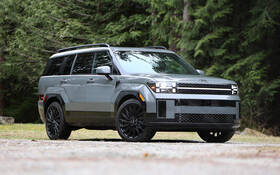2024 Hyundai Santa Fe: Made in South Korea, Inspired by Dearborn

| Strong points |
|
|---|---|
| Weak points |
|
Call it a reincarnation, a revolution or just a remarkable refresh—the all-new 2024 Hyundai Santa Fe is a radical departure from previous iterations with serious Ford Flex vibes and a whole lot more attitude.
Unlike its functional but flavourless predecessors, the fifth-gen Santa Fe knows how to put on a show. With boxy styling and a strong H-theme throughout (just look at the headlights and taillights), this is a Hyundai that looks like no other in the lineup. Heck, it doesn’t even appear to come from the same brand that builds the smaller Tucson. We’d forgive you for thinking it was a Honda or perhaps a Hummer.
- Also: New 2024 Hyundai Santa Fe to Start at $40,999 in Canada
- Also: Hyundai Unveils New Santa Fe NHL Edition Only for Canada
Beyond the polarizing exterior are increased dimensions. More specifically, the new Santa Fe is 45 mm longer and 35 mm taller, resulting in 120 litres of extra cargo room and standard three-row seating just like the larger Palisade.
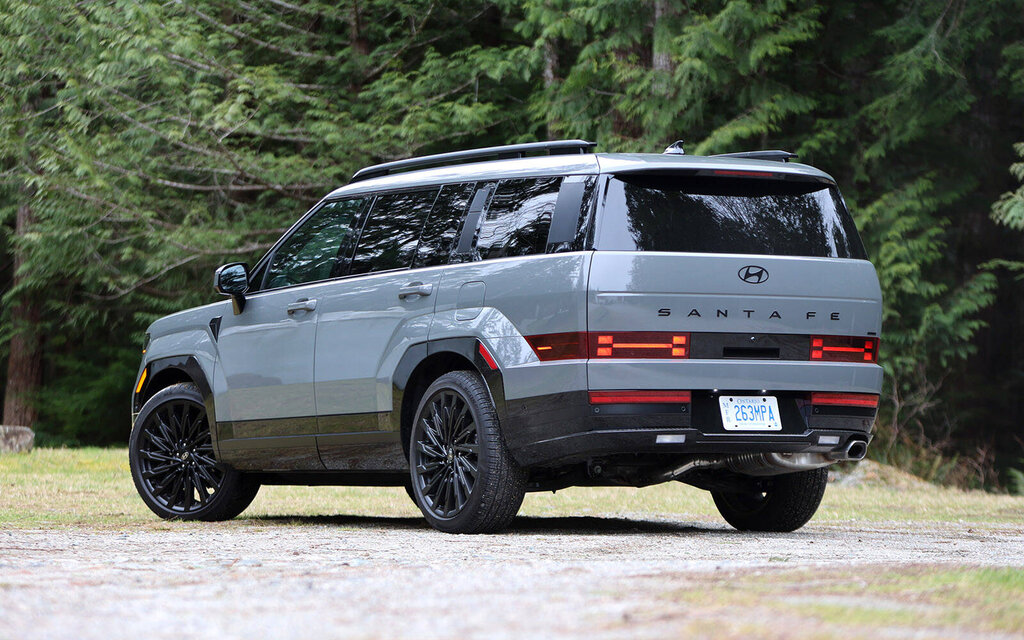
It’s said to be more versatile and more adventurous, too, especially in new XRT trim featuring a raised suspension and maximum towing capacity of up to 4,500 lbs. There’s even a grab handle niftily built into the C-pillar to help owners get to the roof rails and crossbars more easily. Overlanding enthusiasts, take note: Hyundai offers a plethora of accessories including a rooftop tent.
Deja Vu
Inside, the dual 12.3-inch displays are identical to those in the Tucson, Ioniq 5 and Ioniq 6. The centre touchscreen is slightly oriented toward the driver for easy navigation, while another touchscreen positioned below controls the various HVAC functions.
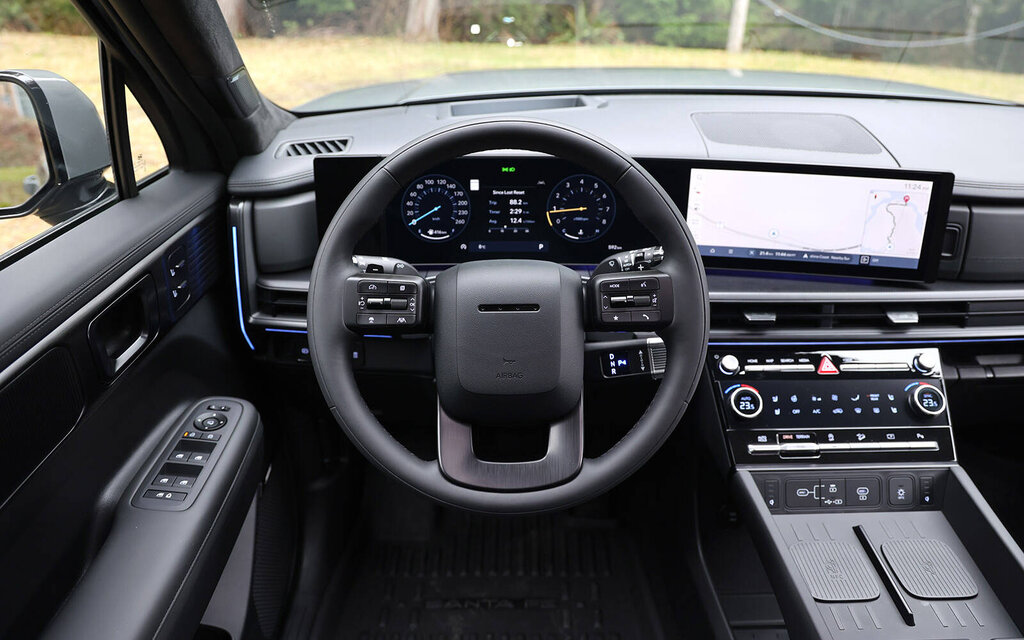
Hyundai designers have focused on ergonomics and practicality for the benefit for everyone on board, which is why you’ll find numerous storage spaces and dual wireless charging pads. In front of the co-driver are dual glove boxes, with the upper one offering a UV-C sterilization compartment for frequently used items such as cell phones, wallets, glasses and more—a pandemic-era solution that’s nice to have but obviously not essential these days.
The cabin is extremely spacious and available with adjustable ambient lighting, a blind spot monitor and a head-up display, not to mention a digital key for your smartphone that we’re pretty sure many customers will appreciate. The top-of-the-line Ultimate Calligraphy model is the only one to offer second-row captain’s chairs for six-passenger seating. Every other Santa Fe gets a three-passenger bench seat in the middle for family-friendly trips.
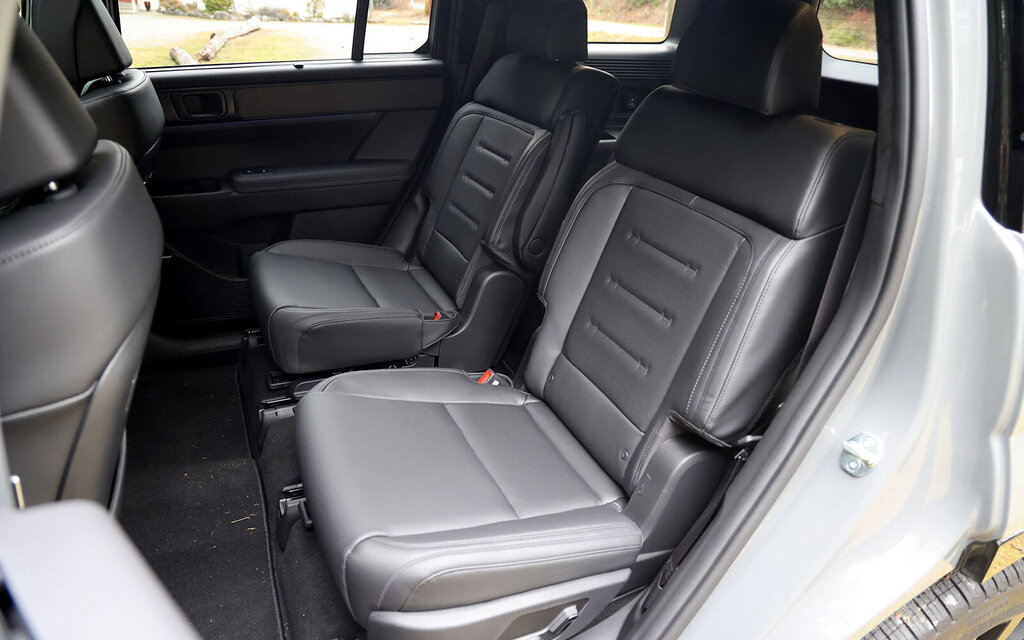
Life behind the steering wheel is quite comfortable. Both the driving position and all-around visibility are excellent, and you don’t get the feeling that the vehicle is that big. Naturally, the Ultimate Calligraphy model takes comfort and luxury to another level, with a so-called relaxation seat featuring a folding leg rest.
PHEV is Gone
When it comes to powertrain options, don’t be shocked to see the plug-in hybrid not returning to the Santa Fe lineup for 2024. Availability was a big problem, and Hyundai prefers to turn its attention to fully electric vehicles such as the upcoming Ioniq 9. If you want a PHEV, there’s always the Tucson.
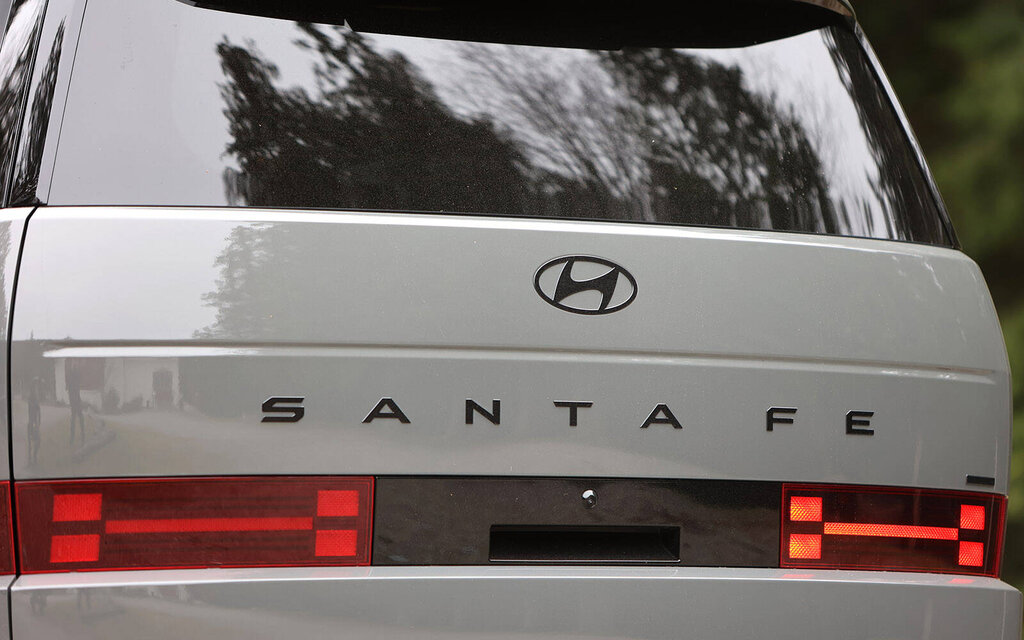
That being said, a standard hybrid system continues to be offered with the Santa Fe. It’s actually the default powertrain now, curiously. Combining a turbocharged 1.6-litre four-cylinder engine with an electric motor housed inside the six-speed automatic transmission, it delivers 232 horsepower and 271 lb-ft of torque. Alas, we didn’t get the opportunity to take it for a spin during the media event.
The alternative is a turbocharged 2.5-litre four-cylinder engine producing 277 horsepower and 311 lb-ft of torque. The bad news is that it’s mated to a disappointing eight-speed dual-clutch transmission shared with the Santa Cruz pickup. The unit is slow to react when accelerating from a standstill and has also experienced reliability issues in recent years.
It’s a shame Hyundai didn’t opt for a conventional autobox, which would have been a better fit in our opinion. Fuel consumption was another letdown during the test drive, averaging 12.2 L/100 km. Maybe the road conditions had something to do with that poor performance, but even Hyundai’s own rating of 10.8 L/100 km fails to impress.
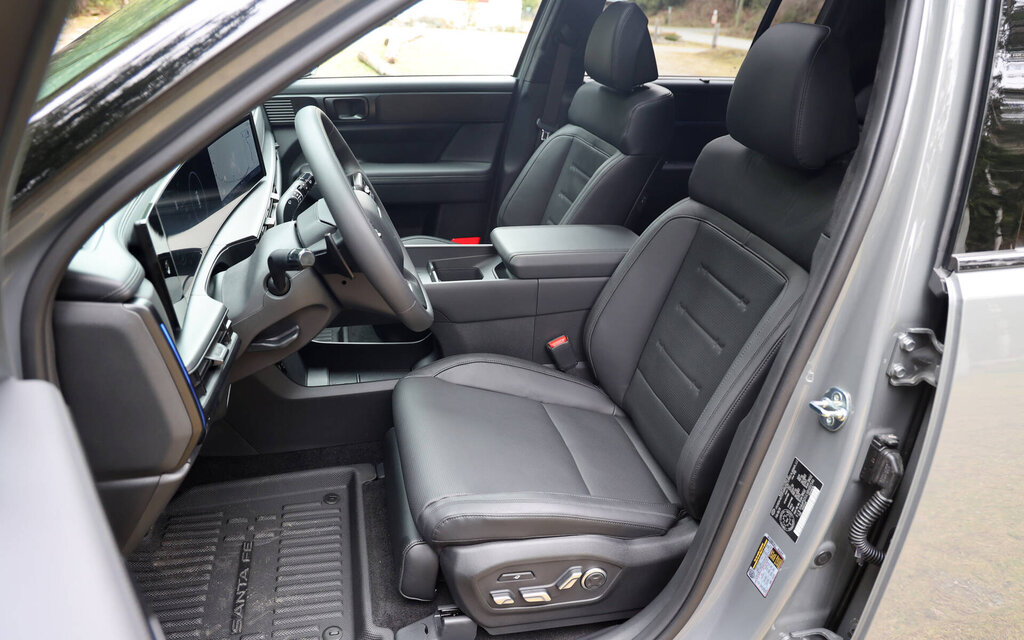
The 2.5T engine, included in XRT, Luxury and Ultimate Calligraphy trim, is not only 36 percent less efficient than the hybrid system (6.9 L/100 km), but also 15 percent less efficient than the turbocharged straight-six engine in the new Mazda CX-90, which proves more potent and more pleasant. By the way, the Santa Fe Hybrid is also available in a Canadian-exclusive NHL Edition limited at 500 units. This model is based on the luxurious Ultimate Calligraphy and will be sought after by many parents who drive their kids to the local arenas a few times a week.
XRT Means Adventure
AT4, TrailSport, RockCreek, Timberline, Wilderness, TRD Off-Road—those are just some of the monikers used by the competition to describe their more rugged and more adventurous vehicles. To be clear, they’re not designed for climbing Mount Everest. Hyundai is the latest automaker to jump on the bandwagon, introducing the Santa Fe XRT.
Highlights include nearly 1.5 inches of extra ground clearance, all-terrain tires, unique 18-inch wheels, increased towing capacity and numerous black accents. At $48,999 (freight and PDI included), the XRT model is the cheapest way to get the 2.5T, but it also offers good value to versatility-minded customers.

Just so you know, the entry-level Preferred model is priced from $42,999. Add another $4,000 for the Trend Package, which retains the frugal hybrid system and will likely be a hot commodity.
Ultimately, the bold and boxy 2024 Hyundai Santa Fe is not an SUV that will please everybody, but it forces people to take notice and might actually attract more customers this time around.


